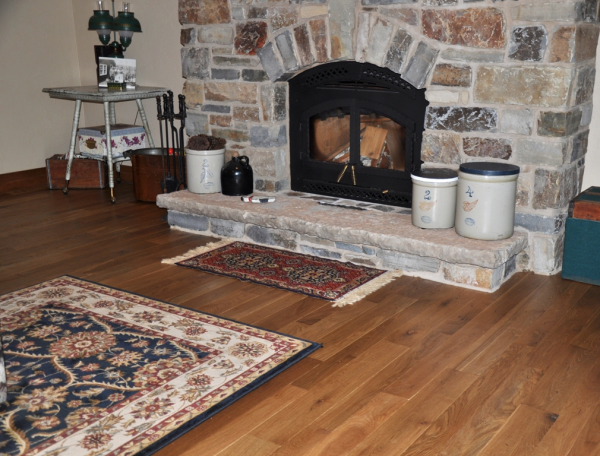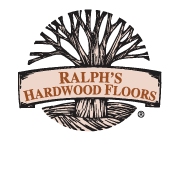Finished hardwood floors that have been made to look rustic, old, and worn are increasingly popular. People often use “character” to describe what they’re after with this look.
Of course, elegant, shiny hardwood floors have their own distinctive character and appeal, but the character that many homeowners now want is one of casualness and age. They want floors that look like they’ve seen lots of life and will be around for lots more.
Maybe that’s because we live in a world in which quick obsolescence of products seems to be the norm. Hardwood flooring that looks aged recalls a time when things lasted longer and when craftsmanship was more valued. There’s something comforting about this look, and it lends itself very well to an environment where people feel relaxed and “at home.”

If you want this type of character in your hardwood flooring, we’d like to share what we’ve learned about achieving it.
- Grade sets the tone.
Hardwood flooring comes in different grades, from first-grade to rustic. A “lower” grade simply means there are more color variations, mineral streaks, knots, worm holes, and other “defects”—which is exactly what homeowners who are looking for a worn appearance want!
- Texture can be added.
Floors can be brushed with wires to give them a mildly worn appearance. They can also be hand scraped to replicate the hand-scraping techniques of the 1800s. For lighter imperfections, we can “hand-distress” the floors by making dents and marks.
- Some woods are better suited for a natural, casual look.
Woods such as oak, ash, and hickory have an open-grain pattern that stands out and creates a more easygoing feel than tighter-grain wood.
- Less sheen often works best.
With high-gloss finishes, new scratches tend to stand out and look like damage rather than an intended appearance. A low sheen can help scratches and other wear meld together into the well-used look you’re after.
- Width matters.
Wider boards generally lead to a more-casual look by emphasizing the grain patterns. They also recall how hardwood floors looked in the 1800s, when wider planks were the standard.
- Edge cuts can be purposely made to look old.
Tooled edges create a non-uniform surface that can add ruggedness. Scraped or chiseled edges make the planks look as if they were hand-crafted before the age of power tools. With the French Bleed technique, we scrape and treat the boards with a dark color to create darkened edges that make the flooring appear long-used.
















